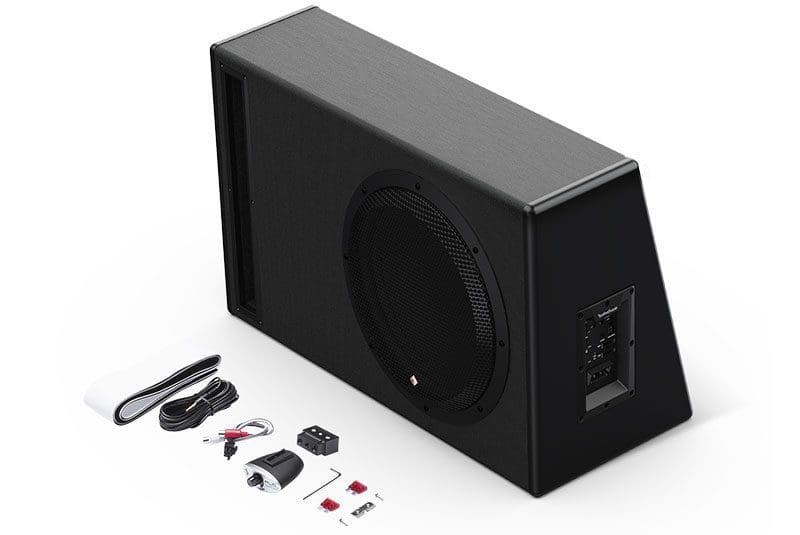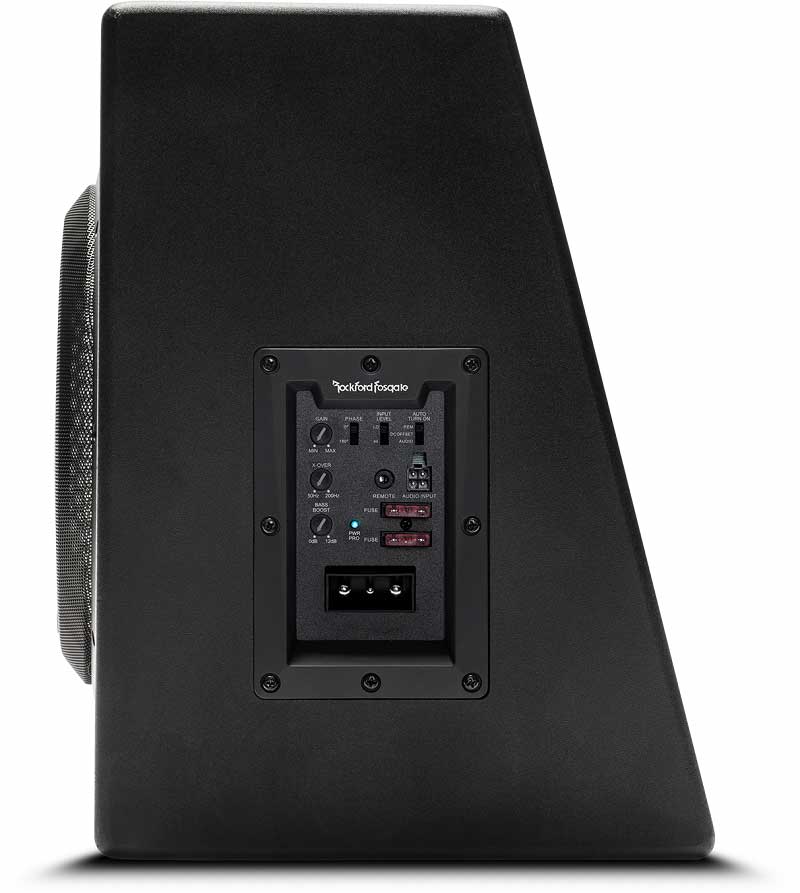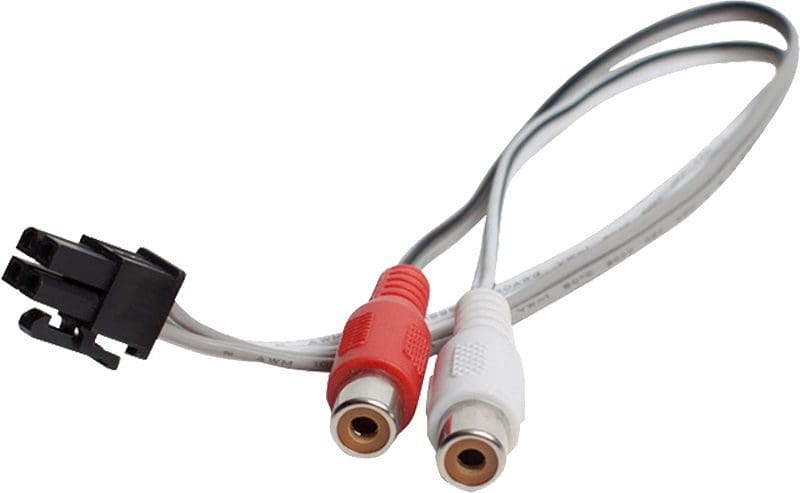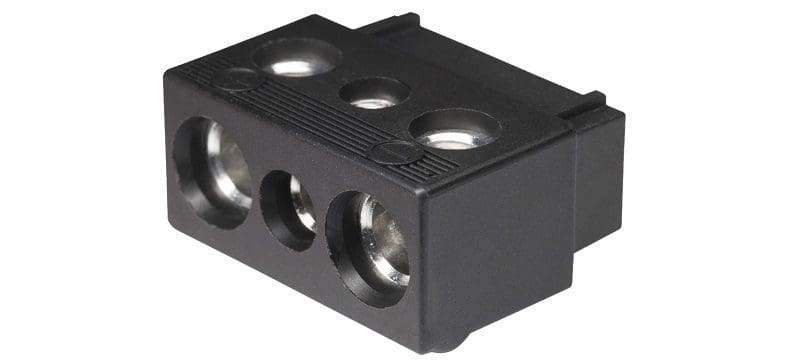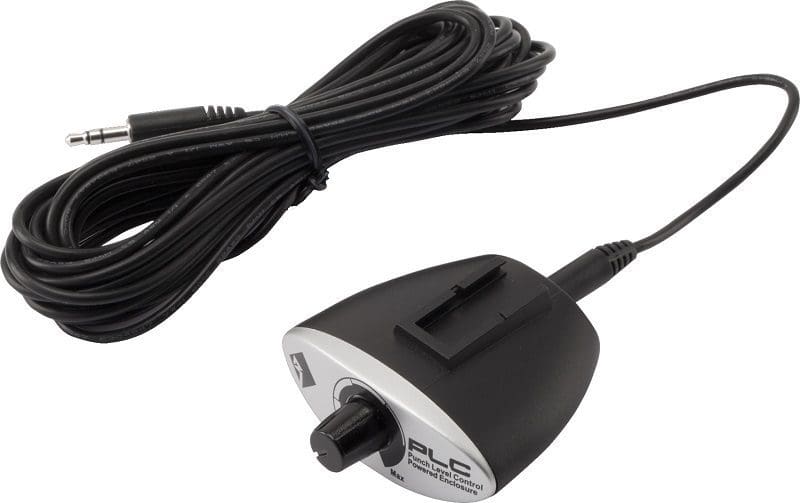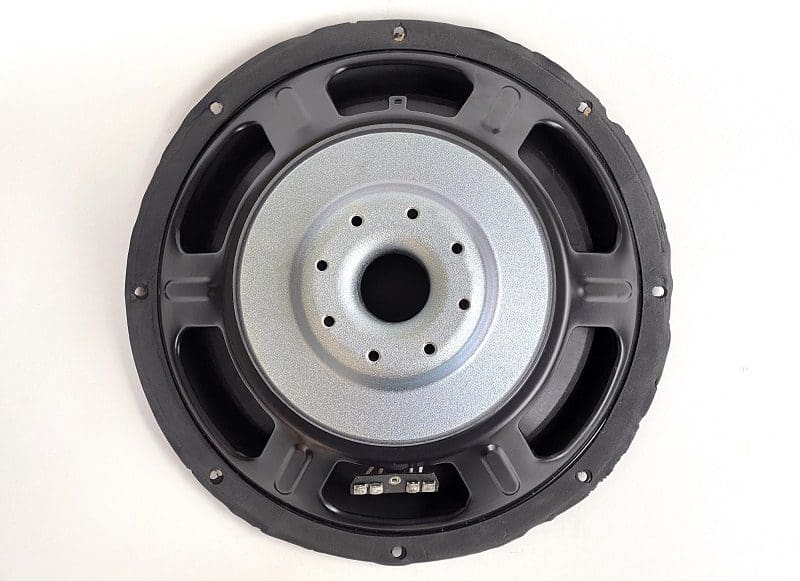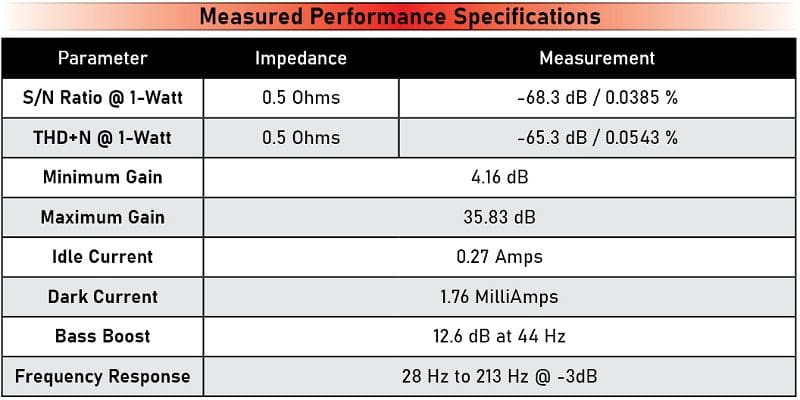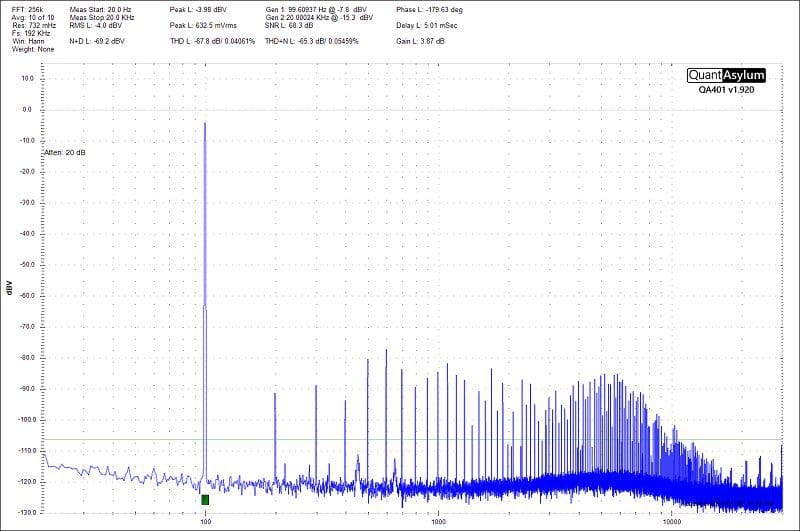Powered subwoofers for car audio systems come in all shapes and sizes. There’s everything from compact units with small woofers that will fit under a seat or against the back wall of a truck to larger, more powerful solutions for sedans, hatchbacks and sport utility vehicles. Rockford Fosgate’s flagship model is the P500-12P 12-inch, 500-watt Powered Enclosure, and we have one in the BestCarAudio.com Test Drive Review lab to check out.
P500-12P Design and Features
The first thing you’ll notice when looking at the P500-12P is that It’s surprisingly small for a bass reflex (vented) enclosure with a 12-inch subwoofer. The fit and finish of the enclosure is amazing. It has a carbon-fiber grain-textured vinyl on the body and a leather-textured vinyl on the end panels. All the edges have nicely rounded corners, and the enclosure includes a mesh grille to protect the woofers. It’s nice to see an enclosure finished in something other than carpet. Overall, it has a classy appearance.
The enclosure is a wedge-shaped design with a back that’s angled by about 12 degrees to help it fit up snugly against the rear seat backs. The enclosure is 14.96 inches tall, 10.91 inches deep at the base and 7.17 inches deep at the top. The grille over the woofer protrudes just a little over 1 inch from the face. The overall width, excluding room for the power and signal cables, is 24.76 inches.
On the left side of the enclosure face is a slot vent with an area just a shade under 18 square inches. For those accustomed to round vent dimensions, this is equivalent to just a hair under what a 5-inch tube would provide. The face of the vent is trimmed in a custom-tooled plastic piece that’s held securely in place with six Phillips-head screws.
On the right end panel of the enclosure is the amplifier. Rockford Fosgate has designed the amp from scratch to deliver impressive power from a compact package. A power plug with terminals for 4-AWG power and ground connections and a remote turn-on connection make the enclosure easily removable. A pair of 15-amp ATC fuses provides over-current protection. Signals are fed to the amp via a four-position Molex-style plug with RCA pigtails on the ends of the wires. Suppose your installer needs to connect this subwoofer system to a factory-installed radio. In that case, he or she can remove the RCA ends and connect the remaining wires directly to the speaker wires. Of course, this means the input stage to the amplifier features a balanced-differential design. This circuit configuration isn’t just necessary when connecting to a factory-installed radio, but it also removes noise in the audio signal that might be picked up by twisted-pair interconnect cables.
The sensitivity control on the amp is adjustable from 150 mV to 6V in the low range and 300 mV to 12V in the high range. The electronic crossover has a -12 dB/octave slope and is adjustable from 50 to 200 Hz. A bass-boost control allows your installer to add up to 12 dB of boost. The specific frequency isn’t specified, so we’ll test that on the bench. Finally, there is a polarity control switch and a remote turn-on adjustment switch. The amp can be triggered by a remote wire in the power connector, or it can turn itself on automatically when it detects an audio signal or the 6V DC offset from a BTL amplifier in a radio. Last but certainly not least, the system includes a Punch Remote Level Control that your installer can mount in the front of the vehicle to let you turn the bass level up and down. Rockford Fosgate includes a plastic bag with a long strip of hook-and-loop tape to help hold the subwoofer in place. There are also extra fuses and an Allen key for making power connections.
Subwoofer System Component Design
Rockford Fosgate specifies the construction material as 5/8-inch medium density fiberboard (MDF). The slot vent on a wedge-style enclosure immediately caught my attention. Some companies try to have the vent follow the angled rear panel of the enclosure. I’m sure trial and error could result in a proper vent length using this design. Rockford keeps the vent aligned parallel to the face of the enclosure and includes a few folds to provide the appropriate dimensions. Suffice it to say, everything is executed perfectly.
Speaking of perfection, the mounting screws for the subwoofer thread into T-nut inserts in the front panel. There’s a thin layer of insulation on the back, top and bottom walls inside the cabinet. Finally, the amplifier is mounted in a small enclosure on the right end panel. The wiring is wrapped in foam tape to prevent buzzes and rattles, and there’s a good blob of silicone adhesive around the hole where the speaker wires enter the enclosure.
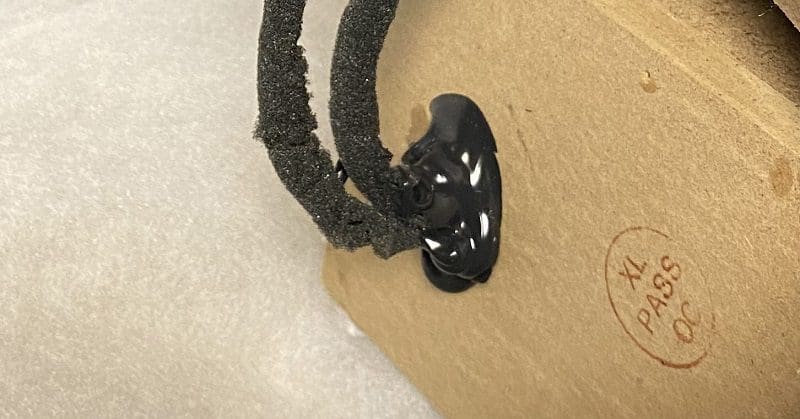
Rockford Fosgate lists the subwoofer used in the P500-12P as a proprietary model. I removed it from the enclosure to check it out. The grille fits perfectly, so it takes a little work to remove it after undoing the eight hex-head machine screws. Likewise, a soft foam gasket on the back of the subwoofer’s mounting lip adds additional “stiction” to keep the sub in place and ensure that it has an airtight seal against the mounting surface.
The woofer is based on a stamped steel basket with six spokes that are strengthened with an embossed rib. Eight cooling holes in the basket just under the spider mounting plateau allow hot air to escape from the outside of the voice coil and relieve pressure under the spider. An additional eight holes in the bottom plate further assist in voice coil cooling. Finally, a large vent in the center of the bottom plate relieves pressure from under the dust cap. The woofer uses a single, large ceramic magnet with a diameter of 6.3125 inches and a height of 1 inch.
On the other side of the woofer, we find an impressively rigid reinforced polypropylene cone and an inverted dust cap. The synthetic rubber surround uses Rockford Fosgate’s VAST design to increase effective cone area while allowing for significant excursion capability. While examining the woofer, I noticed eight cooling holes in the cone under the dust cap just above where the voice coil former attaches.
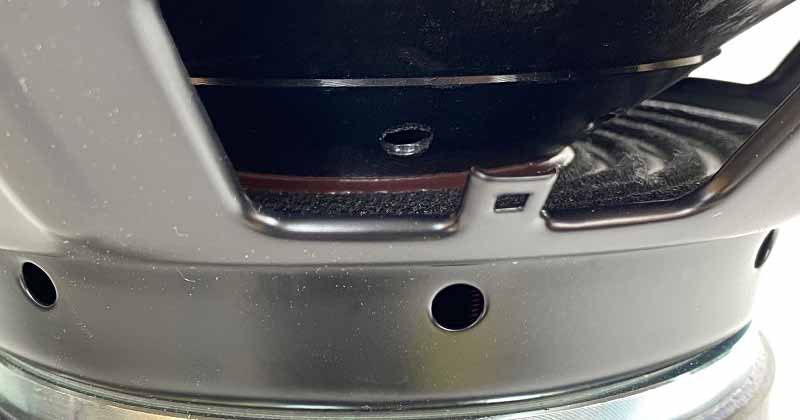
The woofer has a 2.5-inch voice coil winding and looks to use the Rockford Fosgate’s spunlaced reinforcement collar where the voice coil former and spider bond to the cone. Four tinsel leads are stitched into the stiff surround and make connections with a four-position terminal strip on one side of the woofer.
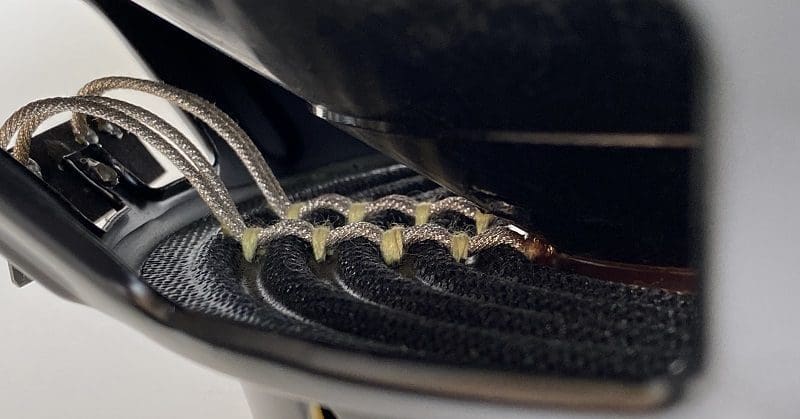
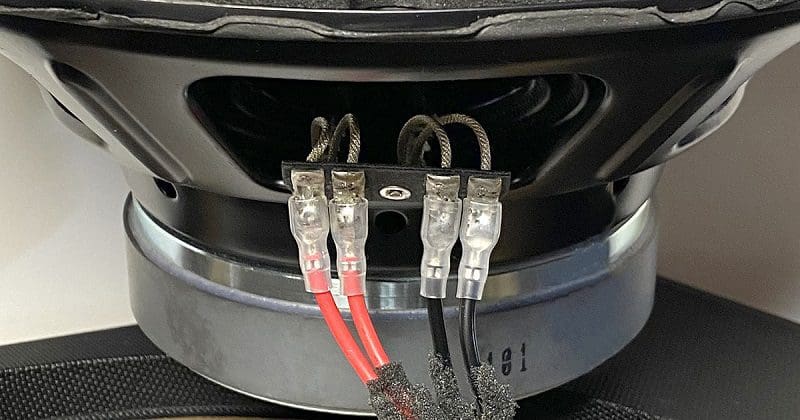
Here’s where this subwoofer system starts to become somewhat unique. The driver has a DC resistance of 0.416 ohm. It would be considered a dual 1-ohm voice coil driver with both coils wired permanently in parallel. This low-impedance woofer dramatically simplifies the amplifier design as there doesn’t need to be a large and costly step-up transformer.
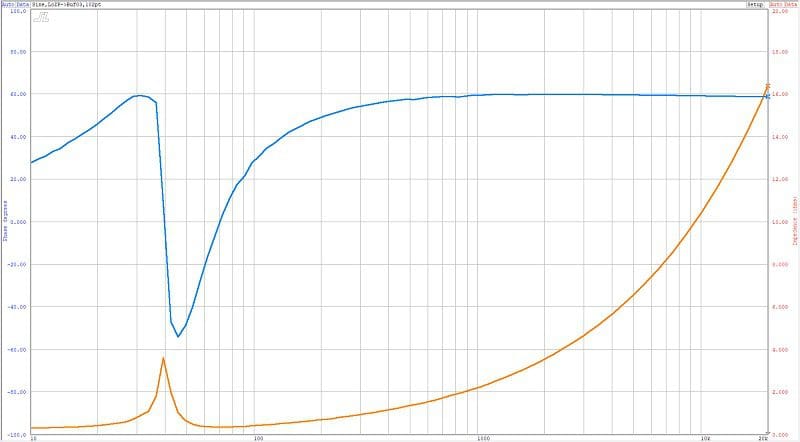
The amplifier comprises two circuit boards in a module about the size of a modern smartphone gift box. The circuit board attached to the rear of the terminal plate includes the signal processing and system configuration circuitry. The rear-most board has several large inductors and capacitors on the visible face and surface mounting switching and ancillary components on the back side. You can see the surface-mount switching devices in the photo below.
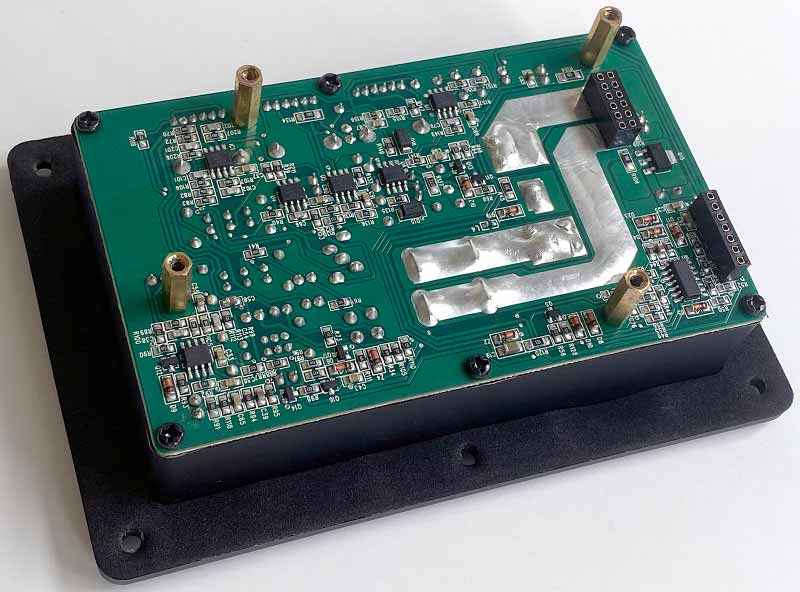
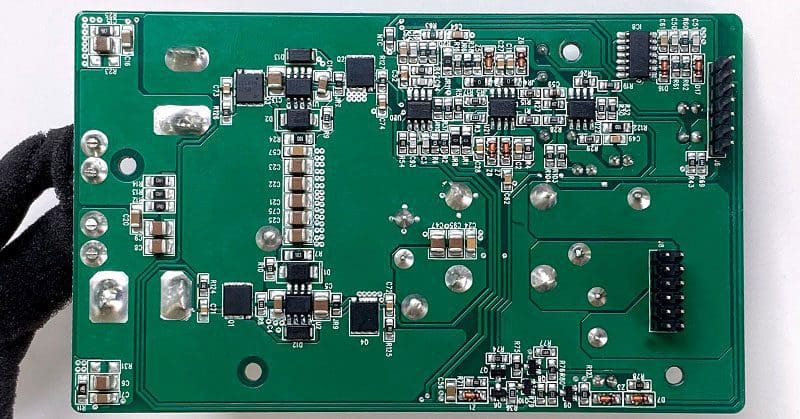
Bench Testing
With the amplifier removed from the enclosure, I set it up on the BestCarAudio.com test bench to make some frequency response and performance measurements. It took the entirety of my high-power load resistor bank wired in parallel to replicate the 0.5-ohm load that the woofer presents to make meaningful measurements.
First, I tested harmonic distortion and noise characteristics, along with the signal-to-noise ratio with the amp producing 707 mV. This voltage is what’s required to produce 1 watt of power into a 0.5-ohm load – the standard for this kind of testing. Given that there is almost three times as much current flowing into the driver to produce 1 watt than a 4-ohm driver, the 0.0534% distortion measurement is exceptional, and the -68.3 dB signal-to-noise ratio is excellent. Many amplifiers fall on their faces in terms of specifications and performance when driving low-impedance loads. This amp most certainly doesn’t suffer from that.
Next, I increased the output of the amp to measure where the output reaches 1% THD+N. Using my D’Amore Engineering AMM-1, the amp made 210.3 watts with 13.08 volts at the power terminals and 22 amps of current flowing. That works out to an efficiency of 73.1%. Let’s check that efficiency against my estimate of 288 watts. Two-hundred and eighty-eight times 0.731 is 210.5 watts. Dang, sometimes I love math. These measurements are taken with the amp driving a purely resistive 0.5-ohm load. The woofer may present a slightly lower impedance, which would result in even more power. Also, consider that the dynamic power production capabilities could be as much as 20% higher. For me, this is a non-issue as the system plays more than loudly enough to rattle all the trim panels in your car or SUV.
The last step in quantifying the amp’s performance was to take a series of frequency response measurements. The graph below shows the amplifier’s response with the crossover at its maximum and minimum settings, along with the function of the Bass Boost control set to its maximum. Frequency response is 28 to 213 Hz with -3 dB tolerances, and the boost allows your installer to dial in up to 12.6 dB of gain at 44 Hz with a nice narrow Q-factor.
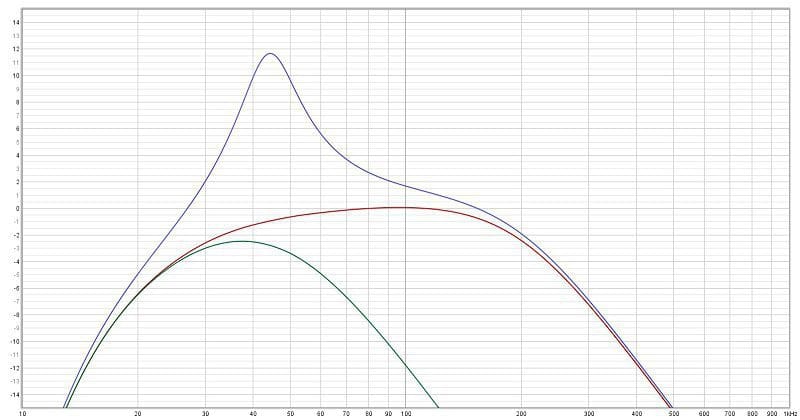
Next, it was time to take a look at the subwoofer. Whether or not it’s relevant, I let the woofer break in for about a few hours by playing a 23 Hz sine wave at a level of 7 watts. Out of the enclosure, this brought the woofer pretty close to its excursion limits. It was worth noting that the woofer was well-behaved during this test and didn’t make any unwanted noises. Silent operation isn’t the case with all designs. The numerous cooling vents all operated perfectly, and there was no noise from the tinsel leads.
After letting the woofer cool for a few hours, I swept it for Fs and Qts measurements using my Smith and Larson Woofer Tester 2, then used the added-mass technique to calculate the Vas. The resonant frequency is around 35 Hz, the Vas is about 1.46 cubic feet, and the Qts is high at 1.09. Designing a subwoofer system for consumers is no easy feat. Balancing efficiency with low-frequency extension and enclosure size is tricky. Based on the numbers, I’d say the engineering team chose to lean toward optimizing efficiency. Let’s see how it measures in terms of acoustic output.
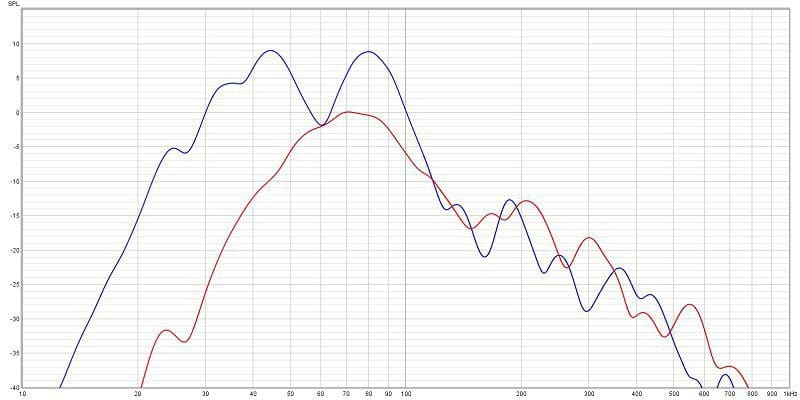
If you were thinking of using this subwoofer system for your living room – it’s not the right solution. If you are going to use it in a car or SUV, then wow. The design has been optimized to work with the typical transfer function low-frequency bass boost that occurs in a small vehicle. In a large room, there’s usable bass down to 45 Hz. In that car, that’s extended to an impressive 30 Hz. Given the compact dimensions of the enclosure and the efficiency provided by a 12-inch subwoofer, this amazing design demonstrates that the engineers at Rockford Fosgate understand how to develop car audio products that work in cars. It’s worth highlighting that the dip you see at 60 Hz is a characteristic of the vehicle. It’s not present in the free-field response. Every car or truck will have a different effect on the perceived performance of the sub you’ve chosen.
Listening Tests
To maintain consistency, I auditioned the enclosure in my test lab. As such, we’ll be giving up some of that low-frequency boost afforded by the compact confines of the vehicle. Nevertheless, it’s a controlled environment in terms of delivering a full-bandwidth signal to the subwoofer amplifier. I can ensure proper integration with the midrange and high-frequency speakers, which is crucial for critical listening.
The first track I played was New Order’s “Blue Monday.” I wanted to test how the sub handled the upper bass attack. The synthesized bass line that starts at 9 seconds into the song has most of its energy focused around 70 Hz, but the content extends down to 31 Hz at a reasonable level. The P500-12P performed great. It wasn’t sloppy or muddy. Each beat was distinct, and the clarity was good.
In keeping with the retro theme, or as my 15-year-old son calls it, “music they play at Laser Tag,” I played “Block Rockin’ Beats” by The Chemical Brothers. The bass line that starts at 1:06 into the track has solid extension down to 31 Hz. The sub had no problem dishing out a great rumble that was easy to feel in my listening chair. Even at what would be considered high volume levels, the subwoofer remained well-behaved, and there was no sense of localization from unwanted harmonic distortion or vent noise. Again, impressive.
I played the intro to The Black Eyed Peas’ “Boom Boom Pow.” This part of the song has a bass drop that extends from 44 seconds to 1:06 into the track. Low-frequency energy extends well below 10 Hz at high levels. The P500-12P didn’t reproduce the lowest of notes, partly because of the infrasonic filter built into the amp and partly because of the high tuning frequency of the enclosure. To hear this information, you’d need an enclosure that was at least twice as large, if not three times. I’d consider the limited infrasonic performance a reasonable trade-off for the compact size of the system. Don’t get me wrong, the ceiling tiles were rattling, and it was still a LOT of fun.
The next two tracks were “Closer” by Nine Inch Nails and “Smooth Criminal” by Michael Jackson. Any chance Trent Reznor used to hang out with MJ? Likely not. The purpose of these tracks was to audition clarity. How well would the subwoofer resolve musical bass information? Overall, I’d rank it as very good. Each note was distinct and clear. The bass wasn’t muddy or uncontrolled. Given the low impedance of the woofer, this is quite the achievement, and I applaud the Rockford Fosgate design team once again.
Last, I played “O-Daiko” from the Sheffield Lab Heartbeat Drummers of Japan disc Kodo. The large drum that starts playing 50 seconds into the track has fundamental information down at 32 Hz with very clearly defined harmonics still in the subwoofer region. Once again, the clarity was impressive. If you haven’t figured it out by now, I had doubts about this ultra-low-impedance, high-Q subwoofer design. My fears were unfounded, and I’d give the P500-12P a thumbs-up any day!
Rockford Fosgate P500-12P Conclusions
Balancing available space in your car or SUV with great bass isn’t easy. The team of car audio fanatics at Rockford Fosgate has done a great job engineering the P500-12P powered subwoofer enclosure. Not only does it sound great, but it’s also easily removable should you need extra space to carry cargo. The system looks classy, and it has all the features your installer will need to make it sound great in your car or SUV. Oh yeah, and it DOES sound great!
If you’re interested in adding some big bass to your ride, drop by your local authorized Rockford Fosgate retailer. You can find a shop near you using the dealer locator on their website. Be sure to follow them on Facebook and Instagram. Also, check out the high-quality videos they have on their YouTube channel.
What I Loved:
- Impressive output from a small enclosure
- Complete set of system integration features
- Classy and elegant cosmetics
- Very good sound quality
What I’d Change/Add:
- A 10-inch car/SUV version

